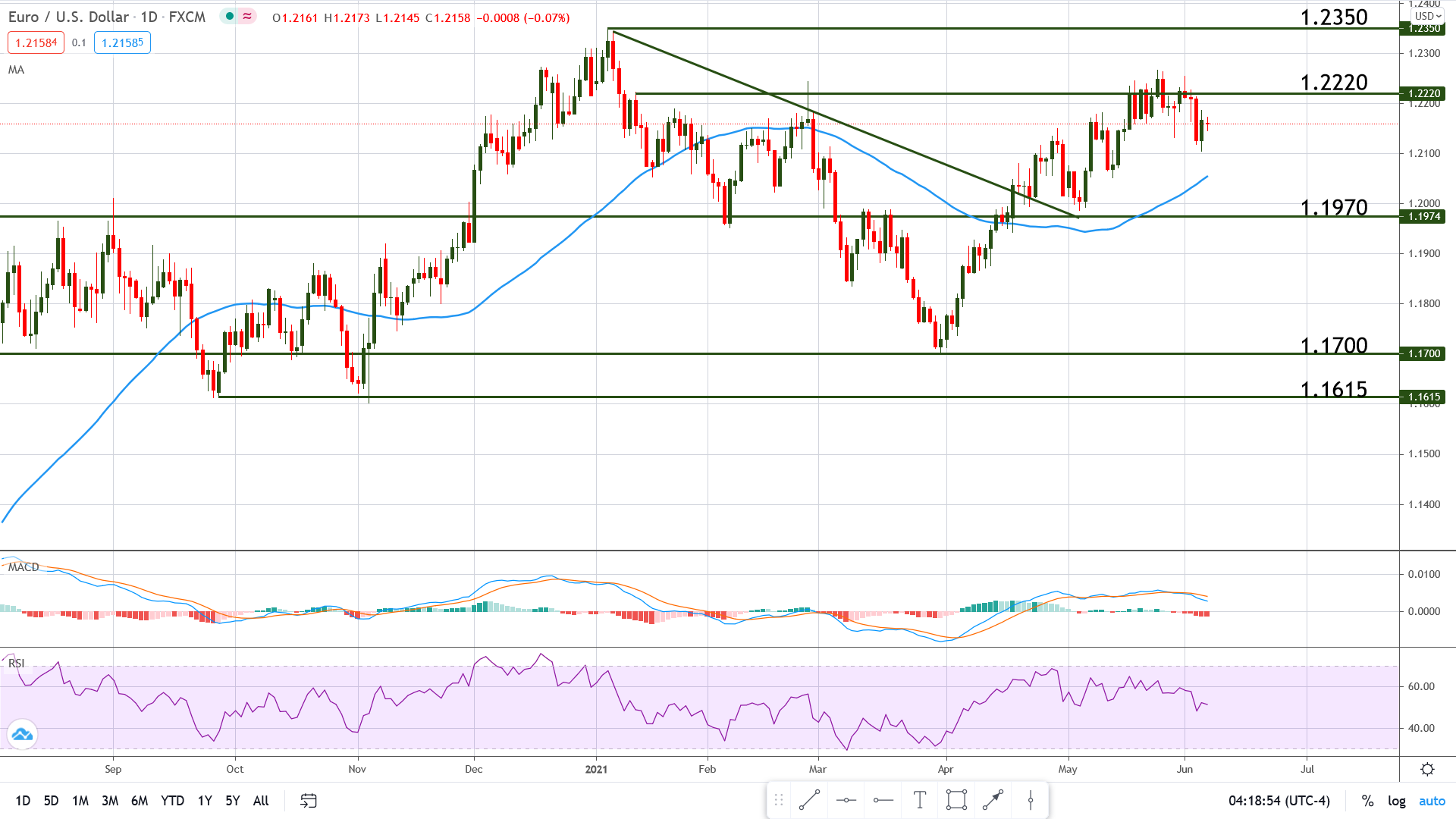Greenback on the Back foot ahead of Inflation Data
U.S. Jobs Miss the Mark Again
by Bogdan Giulvezan
The dollar opened the week on the defensive, trading below the resistance at 1.2200 against the Euro. The weakness was mostly due to the disappointing jobs data that came out Friday, as the Non-Farm Payrolls report showed that only 559K new jobs were created during the previous month, while the expected number was 645K.
Traders and investors will now shift their attention towards the U.S. inflation data scheduled for release later in the week because it could add pressure on the Fed to taper the stimulus, which now stands at $120 billion in bond purchases per month.
Key Events for the Week Ahead
We will be sailing in quiet waters until Thursday, June 10 when the Euro and the US Dollar will be affected by potential market-moving events. At 11:45 am GMT, the European Central Bank will release the Monetary Policy Statement, which contains the outcome of the Interest Rate vote and details about the economic environment that determined the decision. The rate is not expected to change (currently 0.00%) but if the Statement will contain clues about future decisions, then the impact will be stronger.
At 12:30 pm GMT, the ECB will hold the usual press conference where ECB President Lagarde will read a prepared statement and will answer journalists’ questions. This is another potential volatility trigger, depending on the matters discussed and the President’s answers.
At the same time (12:30 pm GMT), the U.S. CPI and Core CPI come out, showing changes in the price that consumers pay for a basket of goods and services. The Core version excludes food and energy from the calculation and it is usually considered more important by the FOMC, acting as a main gauge of inflation. The expected change for both CPI versions is 0.4% but the previous numbers are slightly different: 0.8% for the CPI and 0.9% for the Core CPI.
Technical Outlook – EUR/USD
By now it’s clear that the resistance around 1.2220 is holding and that the pair is geared for a pullback. The MACD is slowly turning south and its lines are spreading apart, a sign that bearish momentum is increasing. We get a similar reading from the RSI, which is curving to the downside but lacks momentum.
The 50 period Moving Average is still very bullish (angled north) and it may offer a good first target for the bears, but it can also push price higher in the eventuality of a touch. It’s likely that we will see a touch of the Moving Average before Thursday’s cluster of events mentioned earlier but after that, the direction will be determined by the fundamental side.
